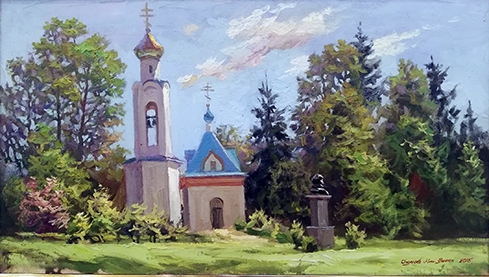


|
 A work at the exhibition.
|
|
|
The event was attended by delegation of the Vietnam-Russia
Parliamentary Friendship Group; Ministry of Culture, Sports and Tourism;
Russian ambassador to Vietnam Konstantin Vnukov; and Head of the Federal
Agency for the Commonwealth of Independent States Affairs, Compatriots Living
Abroad, and International Humanitarian Cooperation (Rossotrudnichestvo),
Eleanora Mitrofanova.
At the opening ceremony, delegates affirmed that the event is an
opportunity to promote cultural exchanges and to promote the friendship and
cooperation between Vietnam and Russia.
On the same day, under the framework of the series of events,
the Russian Centre of Science and Culture in Hanoi organised the cultural
programme at the Hanoi Opera House by a troupe from the "Gzhel” Moscow National
Academic Theatre of Dance.
The theatre was founded in 1988 to commemorate the 650th
anniversary of the existence and development of one of the most well-known
and most recognisable traditional Russian handicraft creations, Gzhel
ceramics. The theatre is known for having Russia’s most outstanding talented
and creative artists.
|
Source: NDO